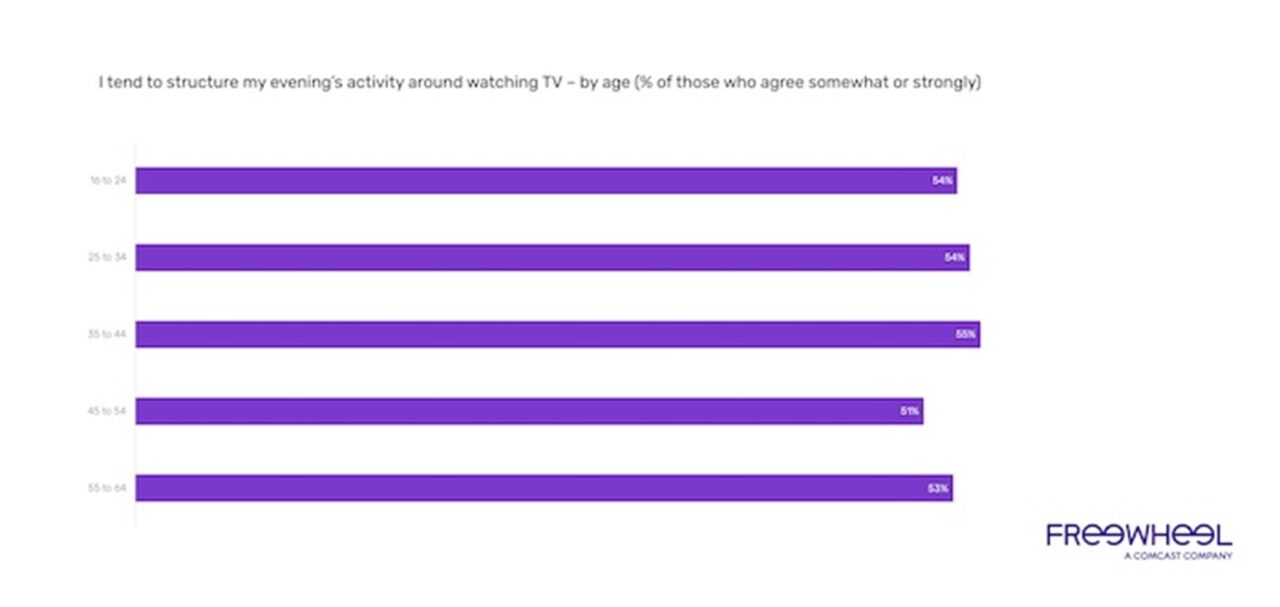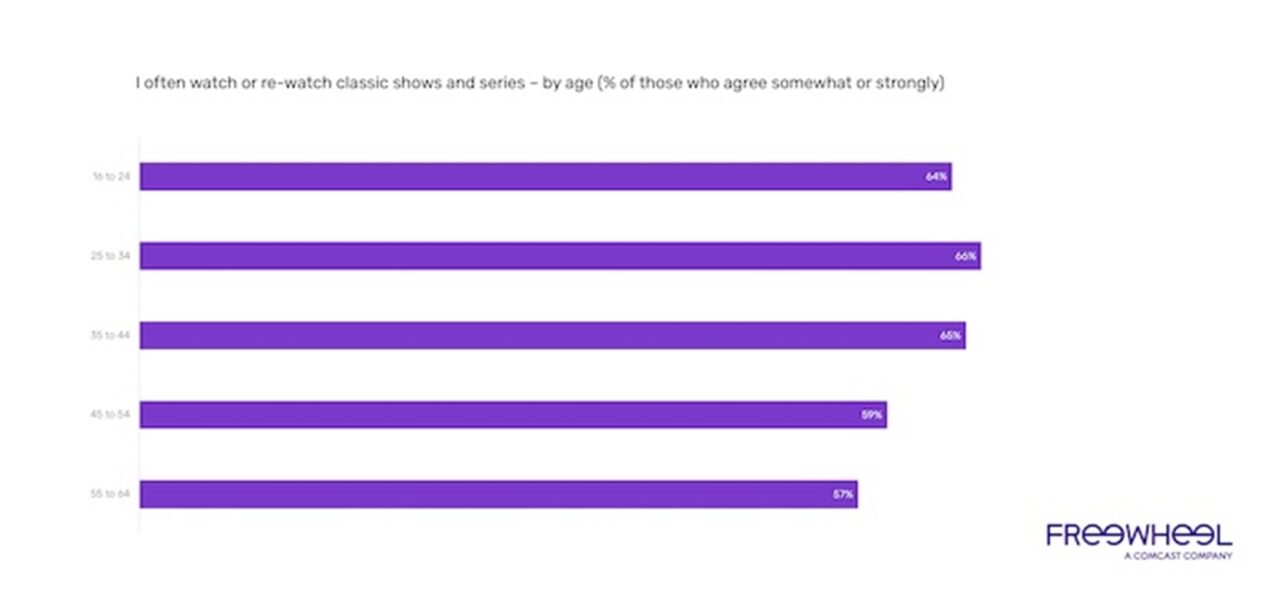Using streaming services is not a matter of age. This is the conclusion of the CTV Barometer report conducted by Freewheel in cooperation with GWI, a company specialising in technologies for consumer behaviour research.
The study examined the preferences and consumption habits of premium video viewers worldwide. It revealed new generational and geographical trends while providing content owners and advertisers with insights into the impact of ad-supported streaming on premium video and consumers’ entertainment choices.
Just under three-quarters (74%) of streaming service users worldwide use connected TV (CTV) and spend nearly two hours a day in front of the screen. According to the 2024 study called Bewegtbildstudie, which focused on moving images and was conducted by RTR Medien in cooperation with the TELETEST working group, this figure is even significantly higher worldwide, reaching as much as 3 hours and 43 minutes. Shared content consumption, often with friends, partners, or family, contradicts the assumption that media usage is becoming increasingly individualised. What other interesting insights did the CTV Barometer study reveal?
Young people watch television too
It was found that almost every second consumer aged 16–64 uses some streaming TV platform at least once a month, with 30% using it every week. While younger age groups initially dominated the use of streaming services, older generations are now increasingly turning to this content as well. The barrier between traditional television and streaming television is gradually fading more and more.
The survey results also show that demographic data generally do not affect satisfaction with television. Satisfaction scores were almost the same for both men and women and hardly differed between various age groups.
Out of 630 million streamers in 11 surveyed countries, 74% stream content via CTV. Nearly half of consumers worldwide aged 16–64 who participated in the survey reported watching streaming TV platforms at least once a month, and one-third (30%) do so weekly, primarily through smart TVs.
 Source: CTV Barometr 2025
Source: CTV Barometr 2025According to the study, Gen Z’s video viewing habits are flexible and multiplatform, and the growing influence of the television screen on younger viewers’ habits is evident: more than half of Gen Z respondents (54%) said they plan their evenings around the TV schedule.
 Source: CTV Barometer 2025
Source: CTV Barometer 2025Gen Z enjoys shared experiences when watching television
This applies to all age groups that participated in the survey, suggesting that TV viewing habits are more uniform than often assumed and—importantly—are shaped by shared experiences: 60% of respondents worldwide said they regularly watch content with a partner or family. This opens up new opportunities for brands to reach their target audience.
“Younger viewers are not only catching up with older generations in streaming TV consumption, but they are doing so intentionally and prefer watching TV in the evening, which is the prime time for engagement and shared viewing,” summarised Emmanuel Josserand, Senior Director of Brand, Agency, and Industry Relations at FreeWheel. “The research has dispelled concerns about losing Gen Z viewers and demonstrated the power of streaming TV in bringing viewer generations closer together, as well as the value this brings to both advertisers and broadcasters,” he added.
Young users prefer not only blockbuster films and series but also classic formats they enjoy re-watching. Classic shows continue to be appreciated by 64% of young people, opening up new approaches to media planning.
 Source: CTV Barometer 2025
Source: CTV Barometer 2025Perception of personalised advertising
Perception of advertising varies across age groups. However, even Generation Z can be effectively and efficiently targeted with personalised advertising. For 68% of young people, personalised advertising is attractive, while this proportion drops to 39% among people aged 55 to 64. Compared to older people, young people are also significantly more willing to share their data in order to receive personalised experiences from TV advertising. According to the study, nearly half (47%) of Gen Z viewers are willing to do so, while among viewers aged 55–64, it is less than a quarter (23%).
 Source: CTV Barometer 2025
Source: CTV Barometer 2025The study results confirmed the assumption that advertising is more effective when delivered in a relevant context: “If you are satisfied with the content you are watching and the environment in which you are watching it, you will be more receptive to the ads surrounding that content, and they will have a greater impact,” Josserand said about the new findings.
Lost generation? Not a chance!
The survey clearly shows that the majority of viewers – including Gen Z – enjoy watching classic shows and series live or on-demand on TV through free streaming channels. The findings suggest that the multifaceted nature of streamed TV encourages an appetite for a wide variety of content (not just the latest releases and big productions) and also supports shared viewing experiences.
The study clearly shows that streamed TV is an attractive platform for intergenerational campaigns and dispels concerns about losing Gen Z. The potential of streamed TV to connect generations proves to be a significant added value for both advertisers and broadcasters. Brands can greatly benefit from the advantages offered by more targeted and personalised ad delivery on streamed TV. The high level of acceptance of ad-supported streamed TV means that reach can be maximised through smart targeting strategies, allowing users to be engaged in a way that captures attention within a premium video environment.
Streaming platforms have simply become the foundation of modern media consumption, providing viewers with unparalleled choice and convenience. The extensive and rapid growth of streamed TV is not just a technological advancement. Streamed TV is driving a fundamental cultural shift, changing consumer habits and narrowing generational gaps. Brands must acknowledge this reality and take it into account in their media plans to successfully reach their target audience.
Sources: screenforce.at, freewheel.com

